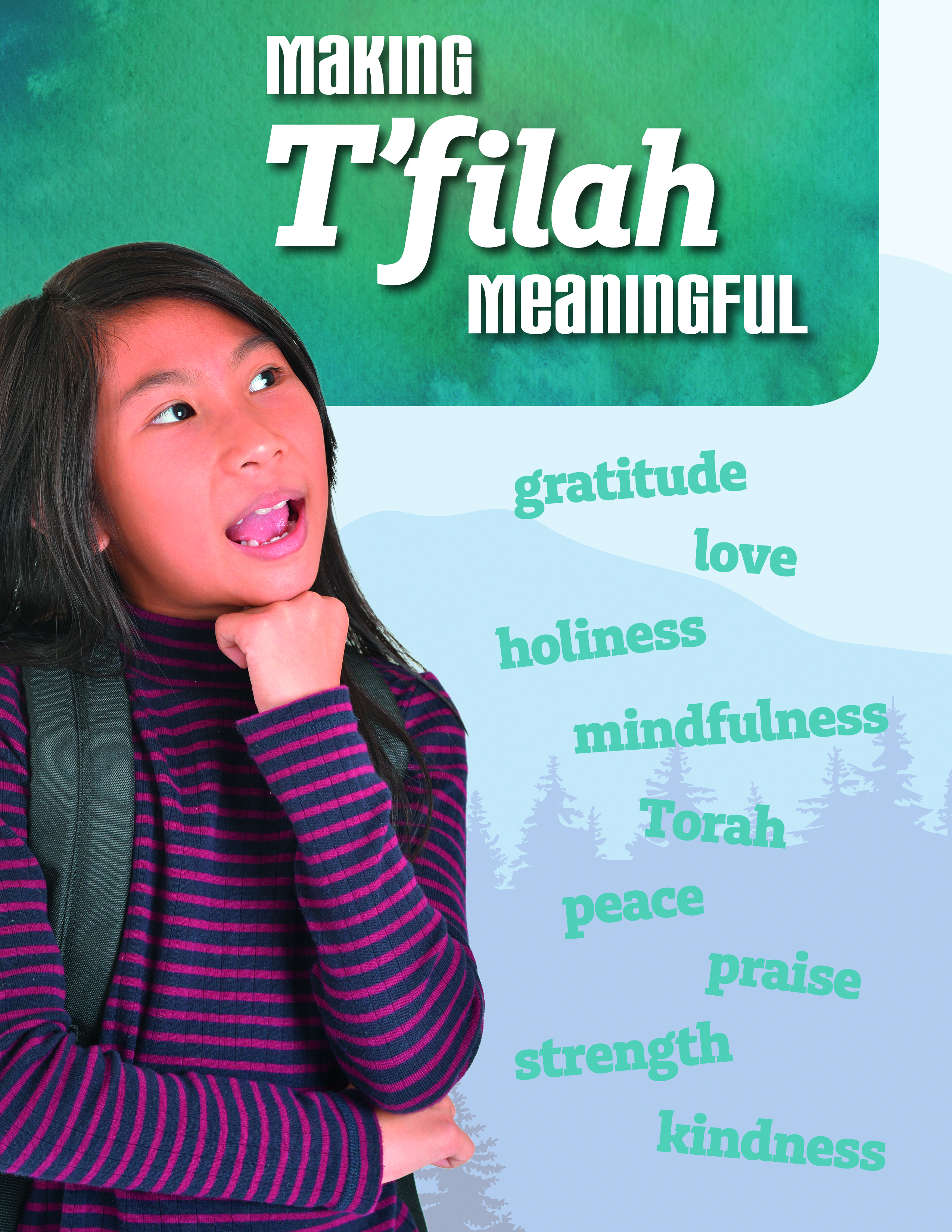- Home
- Play & Learn Home
- Online Enrichment
- Experience Modern Israel
- Israel It's Complicated
- Jewish and Me
- Jewish Holidays Jewish Values
- Jewish Values in Genesis and Jewish Values in Exodus
- Min Ha’aretz
- Our Place in the Universe
- Simply Seder
- The Prophets: Speaking Out for Justice
- Making T'filah Meaningful
- Make, Create, Celebrate
- Yom Haatzmaut Resources
- Hebrew Apps
- About The OLC
- What is the OLC?
- Introduction
- Get Started
- Resources
- OLC Content
- Parent Materials
- See My OLC Classes
- Store
Making T'filah Meaningful for Your Students
Written by Behrman House Staff, 01 of May, 2017As educator Batsheva Frankel writes in her forthcoming book, The Jewish Educator's Companion (Behrman House, June 2017), one of the most challenging topics to teach is t'filah.
"It isn't really about the mechanics of prayer - teaching the words or tunes. That's the easy part. More difficult is helping students find meaning in the prayers. How do students relate to the ancient language and imagery of the siddur? If they don't understand the words, it can seem like gibberish. They often aren't exposed to models of adults engaged in passionate or meaninful t'filah, so they don't see the value in it. ...To aid students in finding the relationship, connection, and meaning in modern times, it's helpful to explore how to engage with God through both communal and personal prayer."
The new series, Making T'filah Meaningful, aims to do just that.
Through 12 individual booklets covering a prayer or group of related prayers that are filled with activities, stories, and questions, students will connect these ancient words with their modern-day lives. Delving into the meaning of the words and prayers sets the stage for students to experience deeper connections in their prayer experiences, both personal and communal.
In Bar'chu, for example, an activity called "Focus in Daily Life" explores the concept of attention and concentration. Students to are asked to name three things they do to help them focus on various activities, such as playing a sport or reading a book. That can open up a discussion about the notion of kavanah, concentrating and focusing one's heart and mind on prayer.
Making T'filah Meaningful is flexibile, both in format and content, designed for use as a supplement to any Hebrew program, to add meaning to t'filah time, or to enhance family program. The prayers (or prayer excerpts) are provided in both Hebrew and English and the booklets and lessons do not teach Hebrew or even presuppose Hebrew reading competency.
The series focuses on students in grades five through seven because this is a crucial time in the development of a child’s Jewish identity. As they are on the cusp of becoming b’nai mitzvah, it is the perfect time to help them approach prayers with understanding that will make their experience personally meaningful. This personal connection will set them up as lifelong learners and active participants in the Jewish community.
A Lesson Plan Manual contains 36 complete lessons - three for each prayer booklet - plus optional activities for digging deeper into topics as time and resources allow. It also includes tips for addressing challenging ideas, such as God, tips for helping students with special needs, and ideas for engaging students' families in the learning. Educators can get a review copy of the Making T'filah Meaninful Lesson Plan Manual, or of any booklet, for a 30% discount. Just mention "review copy" when you order (limit one copy per school).
To learn more about Making T'filah Meaningful, a list of prayers in the series, and online prayer resources, click here.




